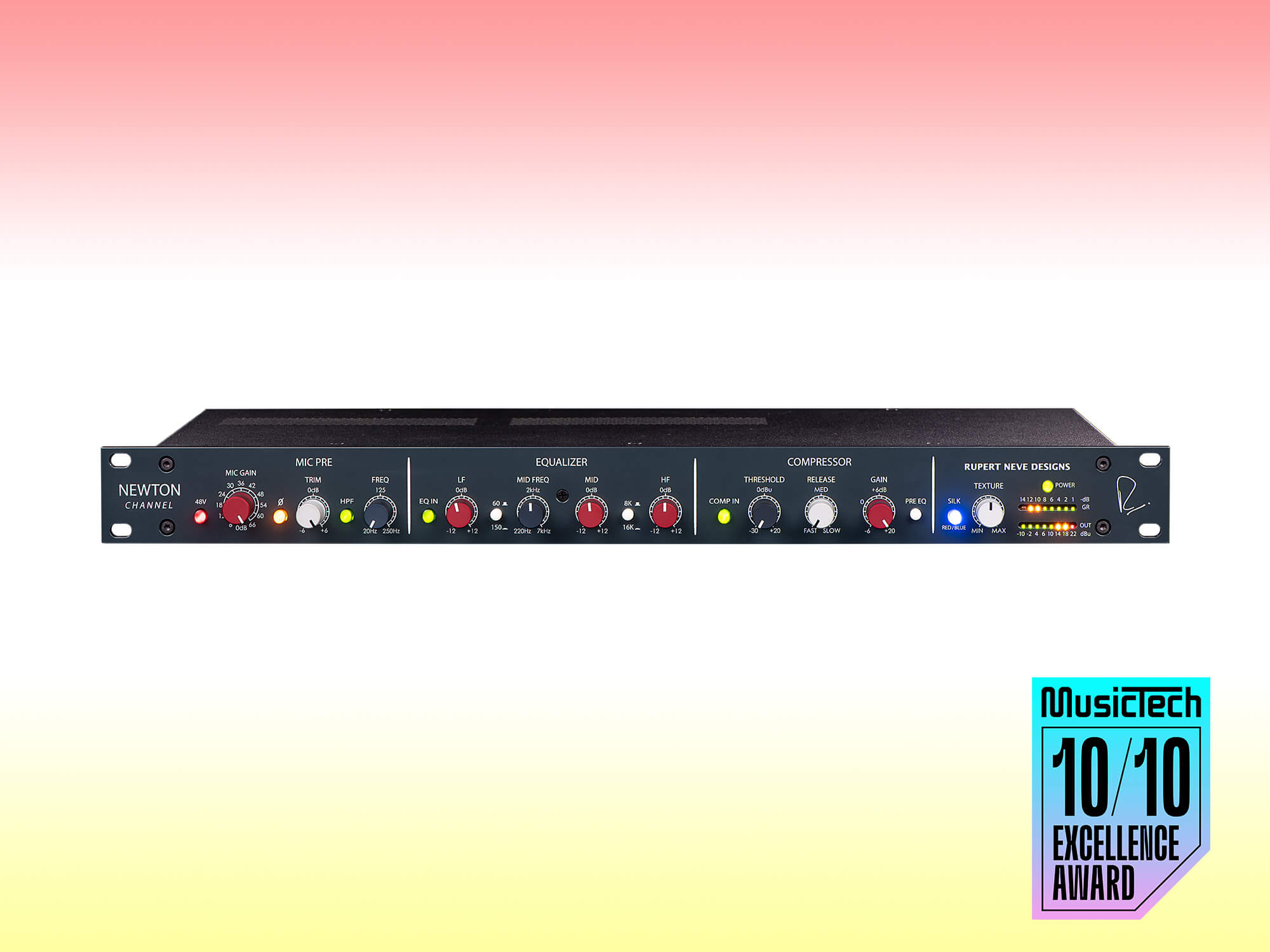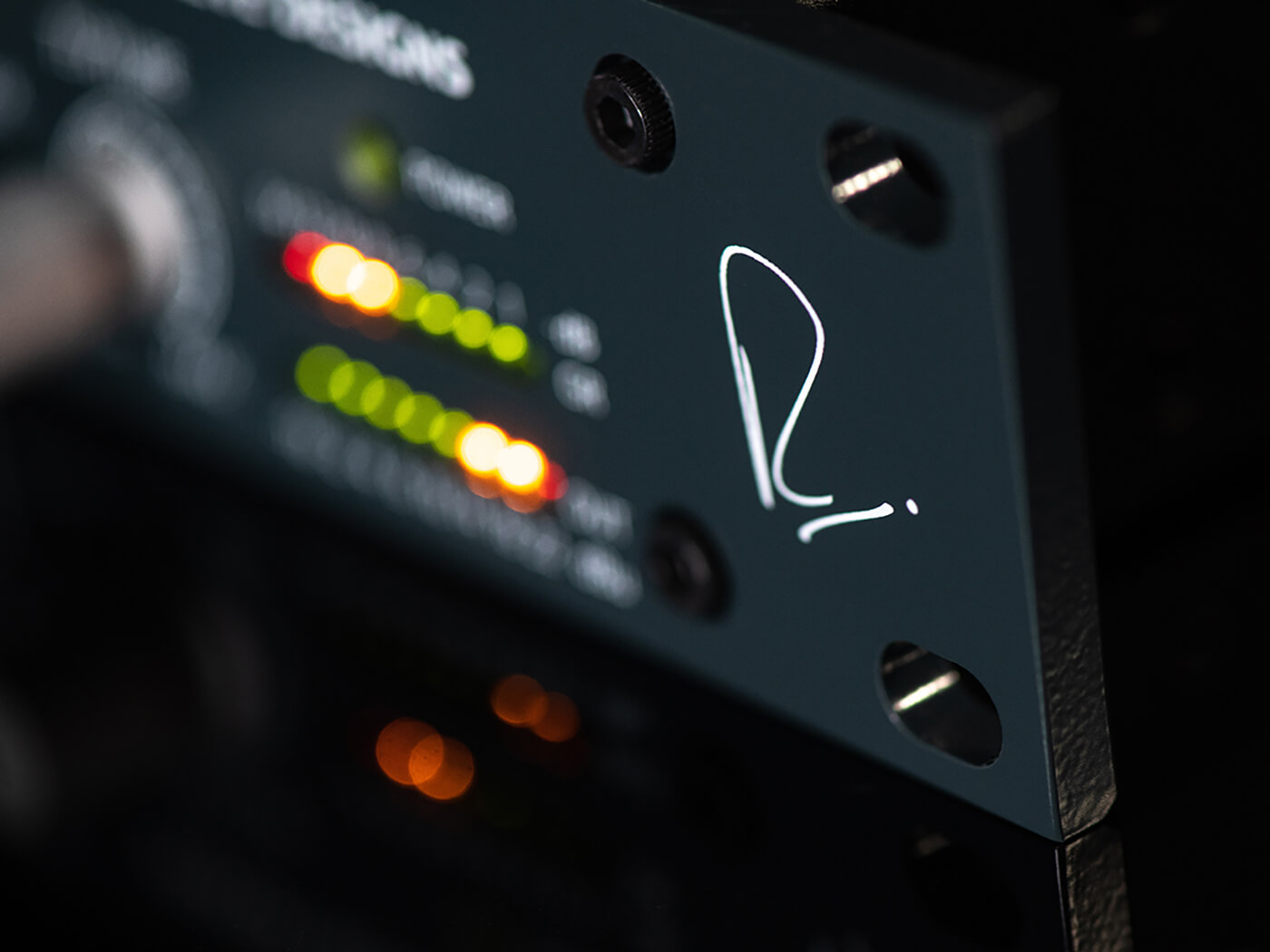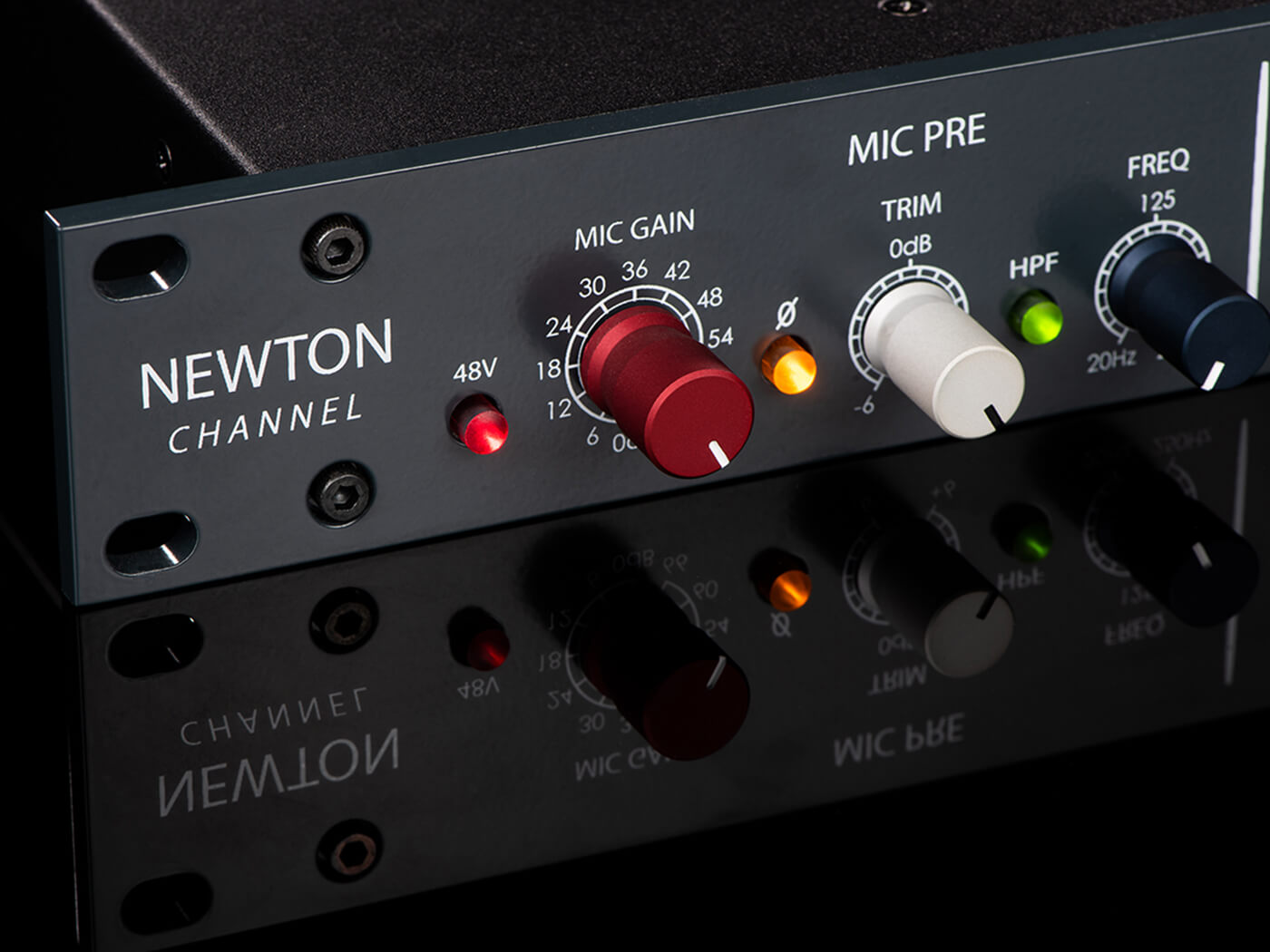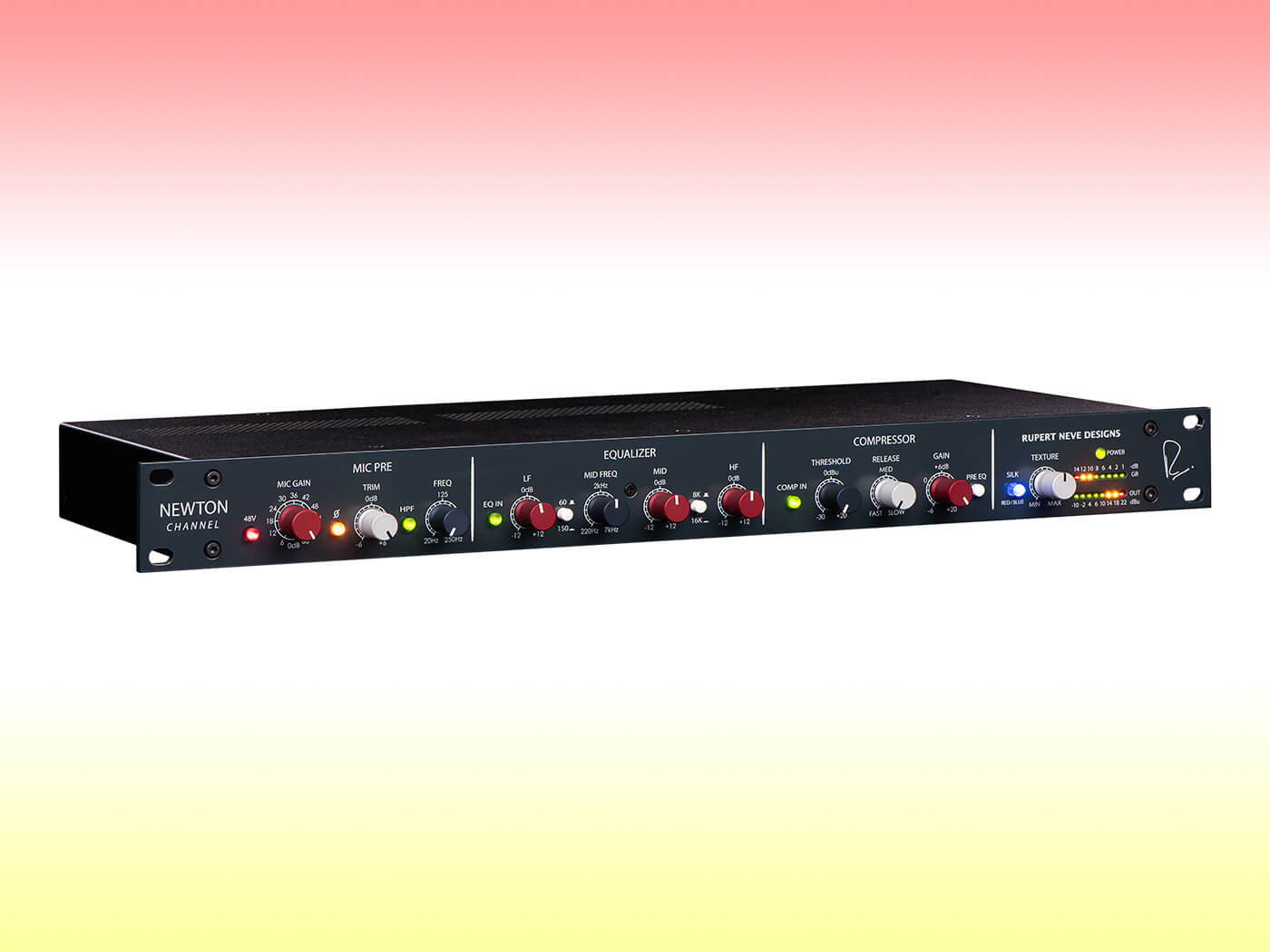Rupert Neve Designs’ Newton Channel might be the best studio investment you could ever make
RND’s reputation may precede this channel strip, but we put it through its paces to learn how versatile and powerful it really is

Rupert Neve Designs’ Newton Channel
Review Overview
Our rating
10
Our verdict
⊕ Wonderful harmonic enhancement
⊕ Simple yet versatile EQ section
⊕ Intuitive VCA compression
⊕ Excellent build and layout
⊖ No DI input
£1,979, rupertneve.com
The late Rupert Neve was a true legend in the pro audio world. Mixing consoles he designed can be heard on thousands of recordings from the nineteen sixties to the present day. His most legendary preamp design from 1970 has been emulated countless times and will, no doubt, continue to be a basis for inspiration. British brand AMS Neve continues to offer the official original design.
But here, we have a new channel strip from Rupert Neve Designs (RND), comprising a mic preamp, equaliser and compressor. A 1U, single rack space design, the Newton isn’t merely a scaled-down version of the company’s flagship Shelford Channel, but an all-new design featuring Class-A solid state technology in its signal paths.
As an analogue front-end, the Newton provides enough gain for any type of microphone, along with powerful, easy-to-use tone and dynamic control.
While the unit is primarily designed for processing sources heading into your DAW (or tape recorder if you’re proper old-school), it needn’t sit idle during mixing sessions since the EQ and compressor can be used together or independently to process previously recorded audio. You can even decide whether the compressor is placed before or after the equaliser in the signal path.

The mic pre offers a healthy 72dB of gain in 6dB steps from a 12-position rotary switch, plus you get +/- 6dB of fine gain control from the continuously variable Trim pot, so precise gain settings can be made. A 48v phantom power switch is provided for use with condenser mics and another switch engages the high-pass-filter. This filter allows accurate filtering of frequencies between 20Hz and 250Hz via a 31-detent HPF pot.
While the mic pre offers exceptionally clean and modern-sounding gain, there is also RND’s unique Silk mode, which adds harmonic content to audio for a more vintage flavour. It’s a wonderful feature, based upon the warmth, glow and sheen characteristics from the Amek 9098 range of the 1990s, though here we have two distinct types of colourisation. Silk Red adds harmonic enhancement to high-mid and high frequencies, whereas Silk Blue does the same for the bottom end from the low-mids downwards; the level of enhancement is controlled with the unit’s Texture pot.
The Newton’s EQ section offers both low and high frequency shelving controls along with a mid-band peaking EQ covering the 220Hz to 7kHz range. Bass frequencies can be boosted or cut at either 60Hz or 150Hz, while the top end shelf operates at either 8kHz or 16kHz. All of these available frequency points are controlled with 31-detent pots, operating within a range of +/- 12dB.

Dynamic range control comes courtesy of RND’s updated VCA compressor, a smooth, intuitive design with simple controls. A soft knee compression type kicks in with a 2:1 ratio, with attack time fixed at 20ms. Release times are user-adjustable, from a fairly fast 50ms to 500ms, controllable (like the threshold and make-up gain controls) with a 31-detent pot. Gain reduction is shown on an eight-segment LED meter, which doubles as an output meter.
Rear panel connectivity features a balanced XLR-1/4 inch TRS combo jack input along with a main balanced XLR output and a -6dB balanced XLR output. The main output uses a custom RND transformer while the -6dB output makes use of the centre tap of the transformer and enables the input to be driven harder without clipping the signal into your DAW. Along with power and ground-lift switches, the unit features a link socket to allow the connection of other Newton Channels.
On first listen, with an acoustic guitar recorded with an AKG C-414 B-ULS, it’s crystal clear that this is a first-class front end, offering an abundance of clean preamp gain. This is with gain set to moderate levels and no harmonic enhancement added. Here, the natural woody character of the C-414 is heard in all its glory, with a pure yet tonally vibrant presentation.

Experimenting with the Silk Red control is a blast, adding an airy openness that traditional EQ cannot provide. In some ways it’s reminiscent of the type of harmonic enhancement you might get with an aural exciter device, adding a beautiful top-end sheen to the sound.
At lower settings – and this is true of the Silk Blue control too – the harmonic enhancement is quite subtle, however when the wick is cranked-up, the guitar tone positively drips with rich harmonics.
Using both high-pass and the parametric mid-band EQ to cut low-end rumble and low-mid muddiness creates a brilliant tone, which is perfected with just a hint of added 16kHz super-top. A mild taming of dynamics, using the VCA compressor before the EQ in the signal path produces a final sound easily equal to our studio’s best outboard gear. As much as we love our valve mic preamps, Overstayer VCA compressor and EQP-1A equaliser, there’s a lot to be said for having this type of control at your fingertips, especially when you need to dial in a killer sound quickly. This is especially useful when you want to get a great performance – from vocalists particularly – without messing around with endless parameters on multiple units and losing the moment.
Recording a Fender bass guitar through a Bassman amp and cab shows the Newton to be a serious full-range unit, with none of the weak-kneed, low-end flub of many budget preamp designs. Once again the Silk control (Blue this time) provides extra strength in the lows to create a fabulously fat tone.

There is no DI input on the front panel, although the rear panel input connector allows line-level equipment to be connected. Sure, a direct input for instruments would be nice, but this would add to the cost of the unit and, at this level, we feel most potential buyers will have a DI box already.
We award full marks to Rupert Neve Designs for this exceptionally capable and versatile channel strip, which not only sounds fantastic, but is also well laid out and boasts excellent build quality. The Newton isn’t a bargain basement design by any means, yet it could be the best hardware investment you ever make.
Key features
- 72dB mic preamp gain
- Fine gain trim
- Silk harmonic enhancement
- 3-band EQ with parametric midrange
- VCA compressor
- Choice of signal path order
- Stereo link available